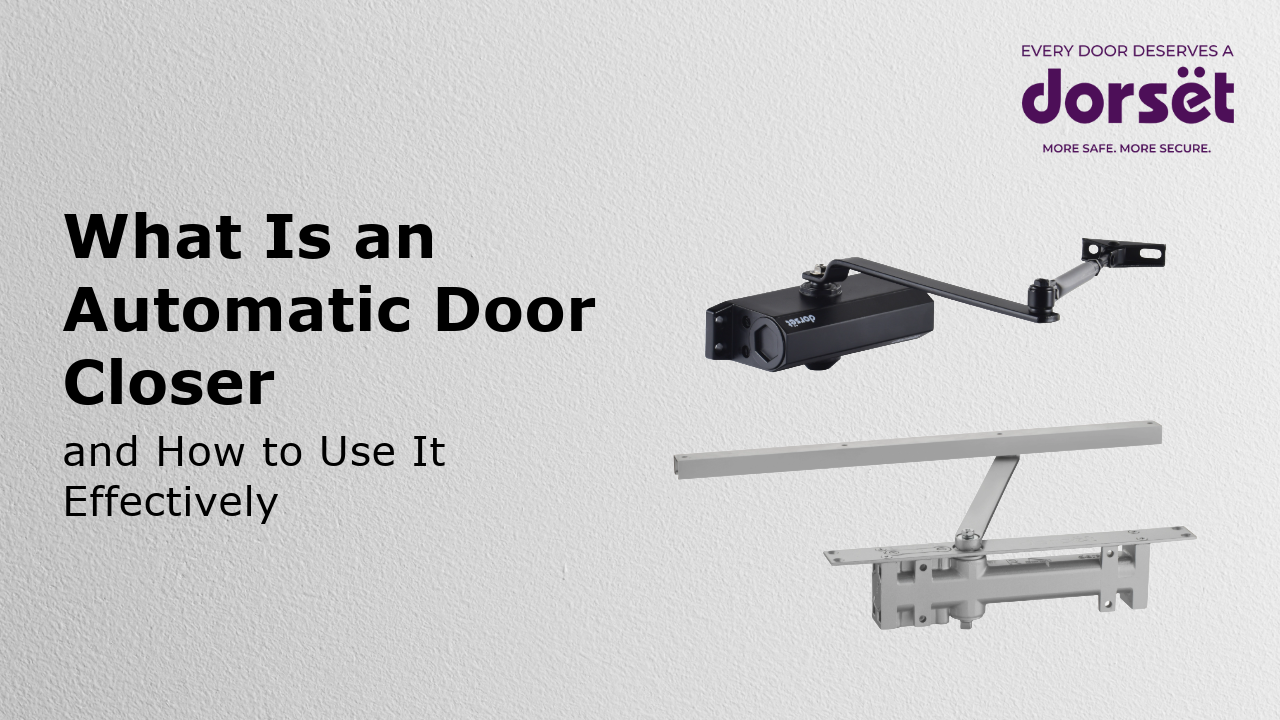
Ever wondered why some doors close perfectly behind you while others slam shut or stay annoyingly ajar? The secret lies in that unassuming mechanical device at the top of the door. It is the automatic door closer. A well-adjusted door closer is one of those small details that makes a big difference in your daily life.
What Exactly Is an Automatic Door Closer?
Simply put, an automatic door closer is a mechanical device that controls the speed and force with which a door closes after being opened. But there's much more engineering behind these devices than meets the eye.
A typical door closer consists of:
- A main body containing hydraulic fluid and a spring mechanism
- An arm system that connects to the door frame
- Adjustable valves that control different aspects of the door's movement
- Mounting hardware that secures everything in place
These parts work together to make sure your door closes at the right speed, without slamming, and latches properly every time.
Why Install a Door Closer?
Before discussing how to use one effectively, let's consider why you might want a door closer in the first place:
- Energy efficiency: It helps regulate the temperature in your home by making sure the climate-controlled air stays where it belongs
- Security: Makes certain doors don't stay accidentally open
- Convenience: No more manually closing doors when your hands are full
- Safety: Prevents doors from slamming, which could cause injury
- Fire safety: Self-closing doors are often required by fire codes in certain areas
- Accessibility: Properly adjusted closers make doors easier to use for everyone
Choosing the Right Door Closer for Your Needs
Not all door closers are created equal, and selecting the right one is important for effective operation. The key factors to consider are:
Door weight and size: This is the most important thing to consider. Door closers are rated for specific door weights and dimensions. Using an underpowered closer on a heavy door will lead to poor performance and premature failure.
Door location and traffic: Interior doors that are opened and shut less have different requirements than exterior doors or doors that are frequently opened and shut.
Closing force needed: Environmental factors like air pressure differences, wind exposure, or stack effect in tall buildings might require stronger closing force.
Aesthetic preferences: Some prefer the sleek look of a concealed closer while others need the adjustability of a surface-mounted unit.
Adjusting Your Door Closer for Optimal Performance
A door closer isn't a "set it and forget it" kind of door hardware. Proper adjustment is key to its effective operation. Most quality door closers have several adjustment valves that control different aspects of the door's movement:
- Closing speed: Controls how quickly the door moves through the main part of its closing arc
- Latching speed: Governs the final few inches to make sure the latch engages properly
- Backcheck: Limits how far and fast the door can be opened, preventing damage from aggressive opening
- Closing force: Determines the power with which the door closes
Finding the perfect balance of these settings is the key to door closer happiness. Too fast, and the door slams and if it is too slow, it might not latch properly.
DIY Door Closer Adjustment
We often hear from customers who are intimidated by door closer adjustment, but by following the below steps, it is quite easy:
- Identify the adjustment valves (usually small screws on the closer body)
- Make small adjustments (a quarter turn at a time)
- Test after each adjustment
- Focus on one aspect at a time (speed, then latching, then backcheck)
- Be patient as finding the perfect balance might take several attempts
Remember that clockwise turns typically slow down movement or increase resistance, while counterclockwise does the opposite but always consult your specific model's instructions as this can vary.
Common Door Closer Issues and Simple Fixes
Even the best automatic door closers can develop issues over time. Here are common problems and their solutions:
Door won't close completely: Usually a closing speed or spring tension issue. Try increasing the closing force or adjusting the latching speed.
Door slams shut: Decrease the closing speed by turning the appropriate valve clockwise. You might also need to adjust the latching speed.
Door closes too slowly: Increase the closing speed carefully but make sure the door still has enough force to overcome the latch.
Door bounces back after closing: The backcheck may be set too strongly. Try reducing it or adjust the latching speed to give the door more force at the end of its travel.
Fluid leaking from closer: This indicates seal damage and usually requires replacement of the unit.
Remember, an effective door closer is one you never have to think about. It simply does its job reliably day after day, year after year. With the right selection, proper adjustment, and occasional maintenance, that's exactly what you'll get.
Whether you're managing a busy commercial space with fire-rated doors that demand reliable closing or simply want your home's entry door to shut gently behind you when your hands are full of groceries, understanding how to use your door closer effectively makes all the difference.